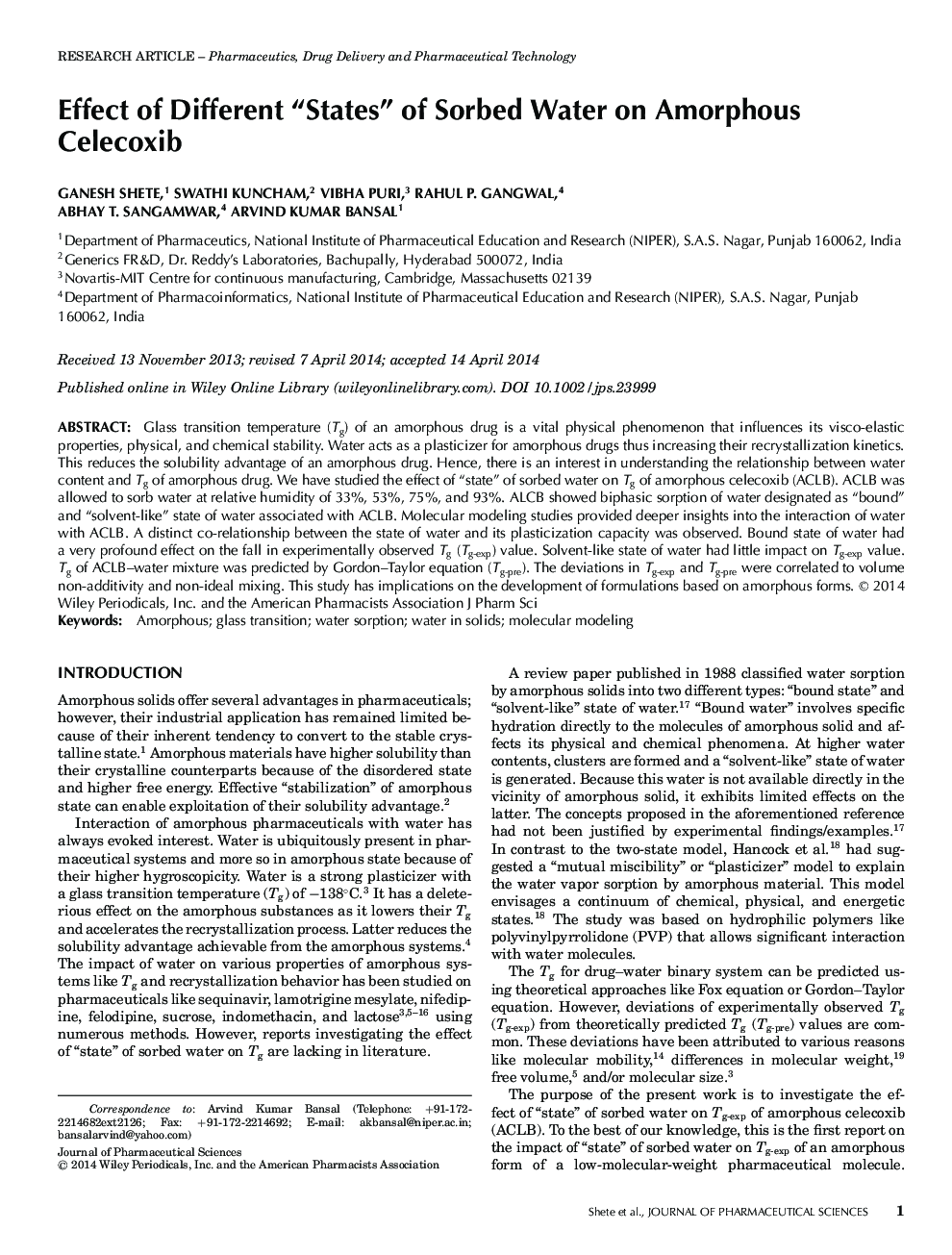| Article ID | Journal | Published Year | Pages | File Type |
|---|---|---|---|---|
| 10162451 | Journal of Pharmaceutical Sciences | 2014 | 9 Pages |
Abstract
Glass transition temperature (Tg) of an amorphous drug is a vital physical phenomenon that influences its visco-elastic properties, physical, and chemical stability. Water acts as a plasticizer for amorphous drugs thus increasing their recrystallization kinetics. This reduces the solubility advantage of an amorphous drug. Hence, there is an interest in understanding the relationship between water content and Tg of amorphous drug. We have studied the effect of “state” of sorbed water on Tg of amorphous celecoxib (ACLB). ACLB was allowed to sorb water at relative humidity of 33%, 53%, 75%, and 93%. ALCB showed biphasic sorption of water designated as “bound” and “solvent-like” state of water associated with ACLB. Molecular modeling studies provided deeper insights into the interaction of water with ACLB. A distinct co-relationship between the state of water and its plasticization capacity was observed. Bound state of water had a very profound effect on the fall in experimentally observed Tg (Tg-exp) value. Solvent-like state of water had little impact on Tg-exp value. Tg of ACLB-water mixture was predicted by Gordon-Taylor equation (Tg-pre). The deviations in Tg-exp and Tg-pre were correlated to volume non-additivity and non-ideal mixing. This study has implications on the development of formulations based on amorphous forms.
Related Topics
Health Sciences
Pharmacology, Toxicology and Pharmaceutical Science
Drug Discovery
Authors
Ganesh Shete, Swathi Kuncham, Vibha Puri, Rahul P. Gangwal, Abhay T. Sangamwar, Arvind Kumar Bansal,
